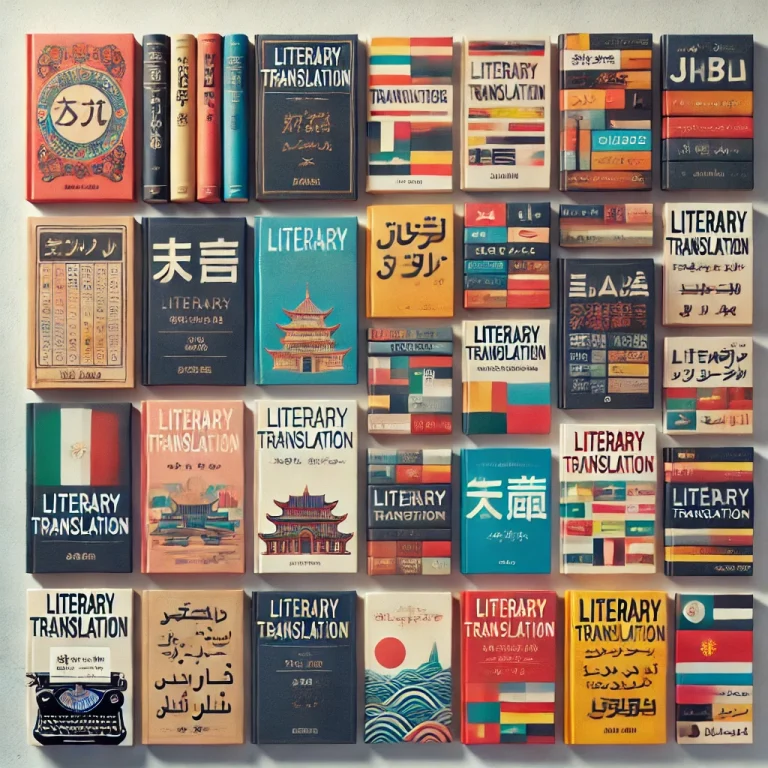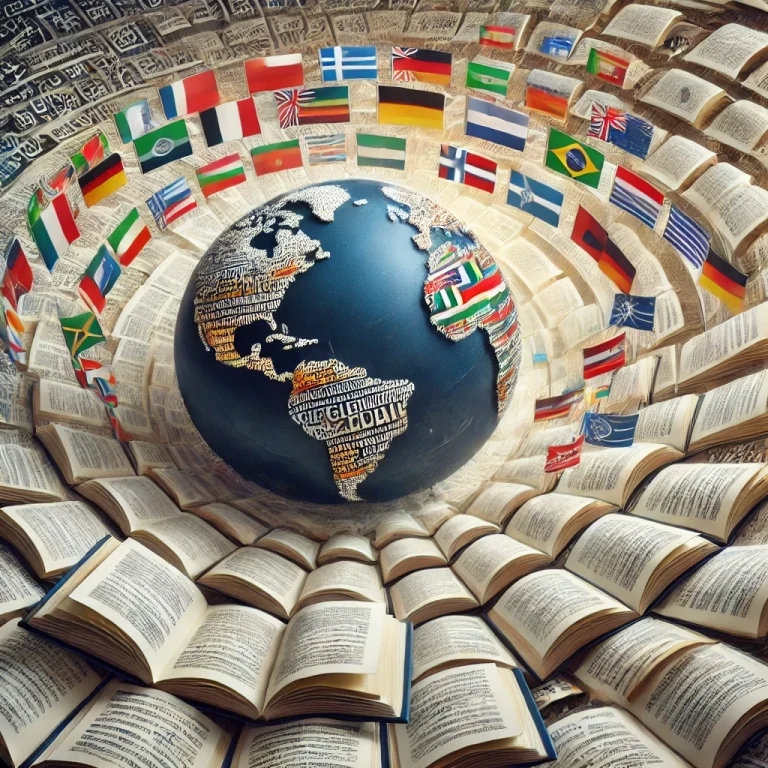In today’s globalized world, literary translation is an essential tool for fostering cross-cultural communication and understanding. Through translating works of literature, ideas, stories, and traditions from one language to another, translators can bridge the cultural gap between different regions and peoples.

Understanding Literary Translation
What is literary translation?
Literary translation is the art of translating creative works such as novels, poetry, and essays from one language to another. Unlike standard document translation services, it requires a deep understanding of not just language but also the culture and emotional nuances of the original text.
Importance in preserving culture and literature
Through literary translation, important works of literature can transcend their original language and reach a wider audience. It helps preserve cultural narratives and brings them to the global stage. Learn more about how professional translation services help ensure accuracy in literary works.
The Evolution of Literary Translation
Historical perspective
The history of literary translation goes back centuries, from the translation of ancient texts such as “The Iliad” to the spread of religious texts like the Bible and the Quran. These translations not only introduced new ideas but also helped preserve them across generations and languages.
Modern developments
Today, the rise of professional translation services and technology has greatly impacted the way literary translation is conducted. With advanced tools like CAT (Computer-Assisted Translation) and machine learning, translators can now enhance their workflows while maintaining the creative and emotional integrity of the original text.
The Role of Literary Translators
Skills needed for literary translation
Being a literary translator demands more than just fluency in multiple languages. It requires an intimate understanding of the source material’s cultural background, tone, and nuances. Translators must also be skilled writers in their target language, able to convey the same depth and emotion as the original.
Challenges faced by literary translators
One of the greatest challenges in literary translation is the cultural gap. Some ideas, idioms, and expressions are deeply rooted in a particular culture and may not have direct translations. The translator must balance between preserving the author’s intent and ensuring that the translated text resonates with the target audience.
Cultural Nuances in Literary Translation
Preserving cultural integrity
One of the most important tasks of a literary translator is preserving the cultural context of the original work. For example, certain metaphors or cultural references in a novel may need explanation or adaptation to make sense in the translated version.
Addressing linguistic differences
Languages differ not just in vocabulary but in how thoughts are structured. When translating from English to Arabic, for instance, differences in sentence structure and grammar must be carefully considered to ensure the translation flows naturally. For more on the complexities of English to Arabic translation, click here.
English to Arabic Translation in Literature
History of Arabic literary translation
The tradition of Arabic literary translation has roots going back centuries, with works by Shakespeare, Orwell, and Tolstoy all finding new life in the Arabic language. Arabic translators have played a vital role in connecting Western and Middle Eastern literary traditions.

Famous works translated from English to Arabic
Notable works such as “1984” by George Orwell and “The Great Gatsby” by F. Scott Fitzgerald have been translated into Arabic, introducing Middle Eastern readers to Western classics.
The Challenges of English to Arabic Literary Translation
Addressing structural and grammatical differences
One of the most challenging aspects of English to Arabic translation lies in the grammatical and syntactical differences between the two languages. Arabic has a more complex structure, often requiring a reworking of entire sentences to maintain the original intent of the text.
Idiomatic expressions and metaphorical language
Idioms and metaphors are another major challenge. Phrases that make perfect sense in English may have no direct equivalent in Arabic, requiring the translator to find culturally relevant alternatives that maintain the original meaning.
The Demand for Professional Translation Services
Benefits of professional translation services
When translating literary works, it’s often necessary to turn to professional translation services. These services provide experienced translators who understand the nuances of both the source and target languages. Professional translators are better equipped to handle complex literary translations, ensuring a higher level of accuracy and quality. Learn more about document translation services and how they differ from literary translations.
When to seek professional document translation services
Literary works, especially when involving legal or technical documents, often require the expertise of a certified translation service. Whether it’s a publishing contract or legal disclaimers in a novel, accuracy is critical to avoiding misunderstandings or misrepresentations.
The Impact of AI and Technology on Literary Translation
AI tools used in translation today
AI is making significant strides in translation services, offering tools that can assist human translators by speeding up the process and providing initial drafts for further refinement. However, while these tools are excellent for basic translations, they often struggle with the complexities of literary works.
Strengths and limitations of AI in literary translation
AI cannot fully replicate the human understanding of context, cultural nuances, and emotional depth. Therefore, while AI can be useful, literary translation still relies heavily on human expertise to ensure the translated text remains true to its original artistic and cultural context.
Success Stories: Bridging Cultures Through Literary Translation
Notable examples of translated literary works
One of the greatest examples of successful literary translation is Gabriel García Márquez’s “One Hundred Years of Solitude,” which, despite its culturally specific content, resonated with readers worldwide thanks to careful and nuanced translation.
How translations have impacted global literature
Through the translation of literary works, cultural barriers are broken down, creating new dialogues between countries and opening readers to different worldviews. Translated literature enriches the global literary landscape by exposing readers to diverse perspectives and ideas.
Conclusion
Literary translation is more than just converting words from one language to another. It’s about preserving the voice, style, and cultural context of the original text, allowing readers from around the world to engage with and appreciate works from different cultures. Whether through professional translation services or advanced AI tools, literary translation continues to bridge the cultural divide and bring the world closer together.
FAQs on Literary Translation and Professional Translation Services
What is literary translation and why is it important?
Literary translation is the process of translating creative works like novels, poetry, and essays from one language to another. It is important because it preserves the cultural, artistic, and emotional integrity of the original work, allowing readers from different cultures to access and appreciate literature from around the world.
How is literary translation different from document translation?
Literary translation focuses on capturing the tone, style, and meaning of creative texts, such as books or poems, while document translation services prioritize accuracy and functionality, such as in legal or technical documents. Literary translation requires more creativity and cultural understanding than standard document translation.
What are the challenges in translating literature from English to Arabic?
English to Arabic translation presents unique challenges due to the significant differences in grammar, sentence structure, and idiomatic expressions. Literary translators must carefully adapt metaphors, cultural references, and stylistic elements to make them resonate with an Arabic-speaking audience while maintaining the original meaning.
When should I use professional translation services for literary works?
You should consider using professional translation services for literary works when the text is complex, culturally specific, or intended for publication. Professional translators have the expertise needed to convey the author’s intent while ensuring the translation is both accurate and culturally relevant.
Can AI be used for literary translation?
While AI tools can assist with basic translations, literary translation requires a deep understanding of culture, emotion, and nuance—areas where AI still struggles. Therefore, human expertise remains critical for high-quality literary translations, especially when dealing with creative and emotionally rich texts.
What are the benefits of translating literature into multiple languages?
Translating literature into multiple languages allows stories and ideas to reach a global audience, fostering cultural exchange and understanding. It can also help preserve cultural narratives and increase the accessibility of literary works to readers from different linguistic backgrounds.


